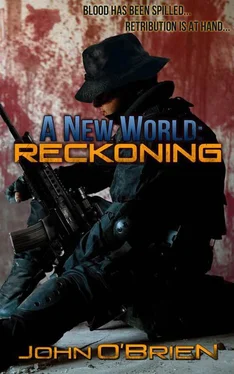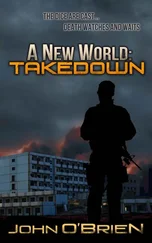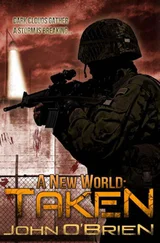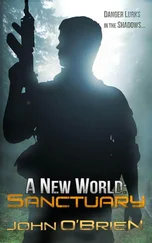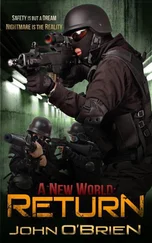Still hugging the slopes, I circle the valley. The turbulence is less severe as we make our way along the slopes of the Salmon River Mountains. North of Idaho Falls, we cut into the Rocky Mountains and turn south to avoid the rolling plains of Wyoming. This is a very circuitous route, but we have the time and fuel.
Climbing ridgelines and plummeting into valleys, I hand the controls over to Robert. Initially, he’s a little hesitant crossing over the ridgelines and brings us too high over the deep ravines but his transitions soon become smoother. The overhead cover of clouds has stayed with us, which is a good thing and we’ve had clear visibility. Looking to the east, I see that trend seems to hold.
The day begins fading as we draw abeam to Salt Lake City and turn east. Only a little over three hundred miles remain, just over an hour of flight time. However, that time will be spent racing through ravines at night. I brief Lynn on our position and time remaining, warning her that we may be in for more bumps but that it should settle down come nightfall. She makes some form of answer which, if I heard correctly, involves something about my genitals and a vise. Surely I heard that wrong but I don’t ask for an elaboration.
As much as I’d like to follow the interstate directly to Denver, I have planned our route far away from the roadway. Although it’s almost night, I have no idea what they may have in place to observe that route and I don’t want to announce our arrival. It would really suck to have made it away clean only to be discovered on their doorstep.
With Robert at the controls, and my hand hovering close to the other set, we fly from ravine to ravine, heading ever eastward. The darkness closes in, making the night flight all that much more interesting. We bring our altitude up as the terrain rises steeply and without much warning. Luckily, the aircraft is equipped with FLIR (Forward Looking IR), making it a little easier.
We break out of the mountains near the town of Boulder. The change is abrupt. One minute we are wrestling the aircraft through steep-sided ravines and the next, we are shooting out over open plains. I have Robert turn north to hug the slopes rising off the plateau as I head into the back to prepare.
I feel the familiar coldness settle into place as I begin donning my gear. First, I pull on the dry suit and put my fatigues over it. I’ll have to vent the suit at times so that it doesn’t build up body heat which will make me visible to thermal imaging. Buttoning my shirt, the emotionless feeling I remember from the past envelopes me. Attaching my chute, I ensure that the sling holding my M-4 is snug. I then check that my leg holster holding my Beretta, with the suppressor in a pouch alongside, is securely strapped on. I haven’t done this in a long, long time and, truth be told, not that many times.
Feeling ready, I shuffle close to the ramp and give a nod to Lynn. She, in turn, relays the information to Robert. I feel the aircraft bank for several seconds before it levels again. Barely noticing the rank stench of vomit in the back, I focus on the upcoming drop. No longer are there thoughts of self-doubt or second-guessing. It’s one step at a time, making sure to keep my impatience in check.
The cloud cover that rolled across the western part of the country, allowed us to leave Portland early. That gives me almost eleven hours of darkness remaining.
Plenty of time to make it there. Just keep your shit in check , I think, seeing the red light illuminate near the ramp.
The aircraft begins a shallow climb and slows as the top of the ramp raises up. The bottom part then lowers into a level position. I don my goggles and begin the shuffle step to the edge of the ramp. I feel a hand on my arm and turn to see Lynn standing next to me, looking up. The roar of the aircraft and the wind outside make it difficult to hear her.
“You be safe, Jack. Although this isn’t the life I had planned for us, it’s the only one we have. You’ll seriously piss me off if you get hurt,” she shouts.
“I love you, too,” I say, to which she smiles.
My eyes are focused on the red light, waiting for it to change to green. The interior is lit with red lighting meant to preserve night vision and outside, past the open ramp, it’s completely dark. The aircraft levels off from its shallow climb and I know we’ve reached five hundred feet above the ground. The light turns green.
Opening up quickly to see if there are any night runners in the area, I’m relieved when I don’t sense any. I shuffle the last couple of feet and throw myself off the back edge of the ramp, vaulting into the black void. With the chill air blowing against my cheeks, I feel the turbulence of the aircraft plowing through the air for a split second; and then comes the familiar feeling of free-falling. That only lasts for a second as the harness pulls tight against me, slowing my descent drastically. There are only a few moments before the ground and I will meet so I quickly look up while pulling down on the risers slightly to feel the tension. The dark chute against the night sky makes it hard to define, but it feels like it is fully deployed. I release my drop pack and look down.
With my vision, I am able to see the ground and it looks far too close, like it’s rushing up to meet me. I totally forgot how disorienting a night LALO jump can be and fight my initial instinct of starting a parachute landing fall. All of the ground below me looks flat, so I quickly steer toward what looks like the middle of a field. Raising my sight to a level attitude, I relax my knees slightly and wait for the first feel of contact with my boots.
Feeling the ground, seemingly at the exact moment that I lift my eyes, I roll into the PLF, ending up on my back. I pull the quick releases and hear the parachute fluff to the ground. Far off, I hear the drone of the 130 which quickly fades. I’m surrounded by silence.
I pull in my gear and release the harness. Donning my pack and ensuring that all of my equipment made it to the ground with me, I stand to get my bearings. If the drop was accurate—and there’s no reason to think it wasn’t—I should be about three miles west of the bunker.
There are very few landmarks to guide on which makes positioning difficult. I undo my fatigue top and unzip the dry suit in order to prevent any heat buildup. With a bead string attached to my vest to mark distances, I set out on an easterly heading. We had planned the drop to be directly west and, being computer controlled, I have no doubts that my heading will bring me to the facility.
Time passes, and it seems like I have climbed over a hundred fences. Walking slowly and having to navigate ditches and barbed wire, it takes me about two hours to arrive near the outer fence of the bunker. Looking through my night vision binoculars, I see the outer perimeter. I’m still far enough away that the cameras won’t be able to pick me up, but I maintain a low profile nonetheless.
I’m hesitating as I know that, once I start forward, things could get interesting. Looking at facility photographs and mission planning in a warm room is far different than looking at it face on. With a deep breath, I focus on the fence poles, counting them until I come to the one that the terrain and closeness to the exit building makes it the best option to go through. It is also the best in regards to angles from the fence-mounted cameras.
The terrain outside of the fence is composed of knee-high stubble which should help minimize my profile as I crawl through it. If I should actually encounter any mines, they’re going to be hard to mark without the cameras picking up the markers. Instead, I’ll be laying a trail of dark brown 550 cord along my path, making sure that it’s hidden amidst the grass stubble yet still visible to those looking for it. The cameras look through the surrounding terrain at an angle, so the grass should conceal it easily enough.
Читать дальше
